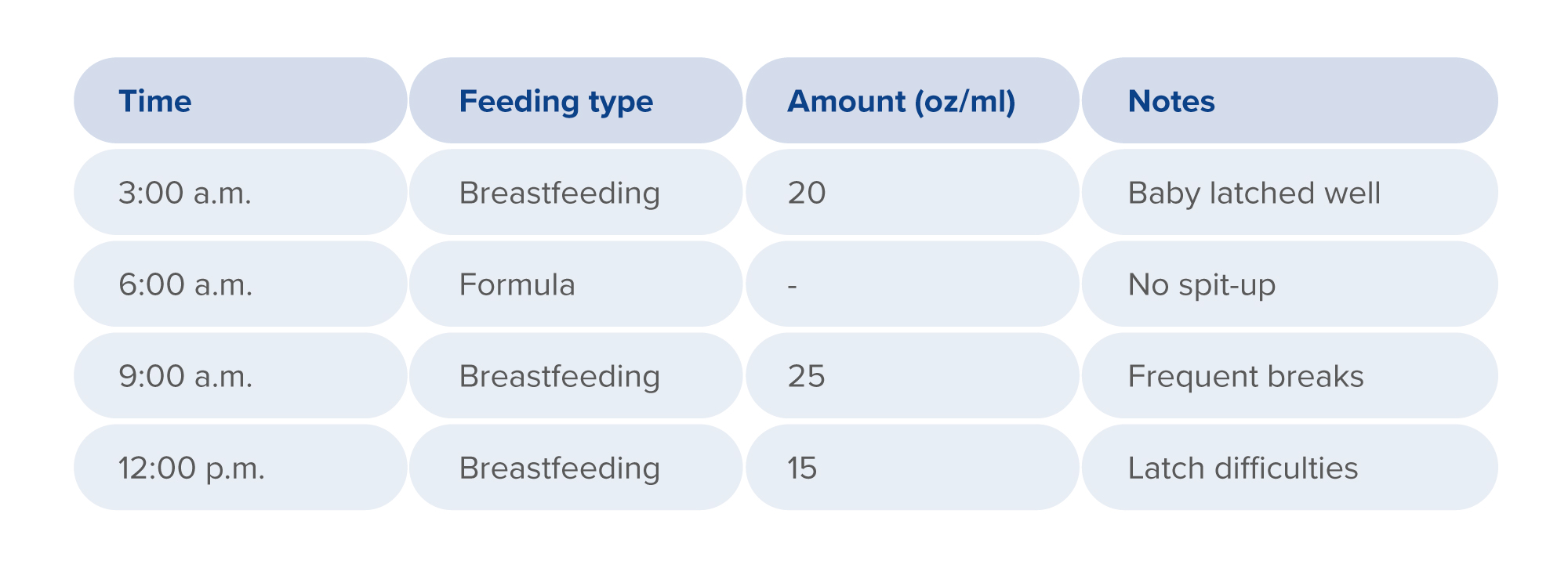Essential Guide to Feeding a 3-Day-Old Baby
Watching your baby grow will be the best gift, but often there are more questions around feeding than ever in the early days. By day three, your newborn will become more alert and responsive to the surroundings. During this time, you’ll probably still be producing colostrum or starting to transition to mature breast milk. The milk might look pale in color and appear quite thin and watery, but it is high in fat and carbohydrates to supply important energy.

Breastfeeding vs. Bottle Feeding for a Newborn
Breast milk provides everything your baby needs for optimal growth and development. Babies who are breastfed are less likely to suffer from illnesses such as ear infections, vomiting, diarrhea, and respiratory tract infections. So, even if you only breastfeed your little one for a short while, it can be invaluable.
Many parents choose to formula feed, either exclusively or in combination with breastfeeding. You still get all the chances to enjoy the special times you share when feeding your baby—the touching, cuddles, and close eye contact.
Formula is the only safe alternative to breast milk and provides your growing baby with the nutrition they need to grow properly. You’ll need to follow detailed instructions carefully to ensure the baby's feed is made up correctly and has the right level of nutrients.
Common Feeding Challenges for a 3-Day-Old Baby
3-day-old babies may experience some feeding challenges, such as:
- Spitting or reflux — The baby’s digestive system is still developing, so they may have a reflux during feeding.
- Refusing to eat — Your baby may turn their head away or refuse to suckle.
- Latch issues — Babies may struggle to latch onto the breast correctly.
- Formula intolerance — Some babies may not tolerate certain formulas, which can lead to digestion issues.
- Sleepiness — Newborns are often sleepy and may need gentle encouragement to wake up for feeds.
Most of these issues usually go away after a while, but if you have any concerns, consult a lactation specialist or doctor for guidance.
Feeding Schedules and Patterns

Your baby's growth won’t always be steady and can happen in spurts. This means that their appetite can be unpredictable and can change from one day to the next. You may find that the amount of milk they need may vary slightly from day to day. This is normal and isn't something you need to worry about as long as your baby is growing well.
The best thing you can do to ensure your baby is getting enough nourishment during this time is to feed on demand. That is, feed your baby whenever they want to be fed. On average, a newborn baby needs to be fed about 8-11 times (or even more) a day. If you're breastfeeding, allowing your baby to suckle whenever they want to, usually every 2 to 3 hours on average, will also help ensure you make plenty of milk.
Adjusting Feeding Schedules Based on Baby's Needs
A 3-day-old baby’s feeding patterns are still unpredictable, so feed them whenever you notice hunger cues. During feeding time, ensure your baby is latching properly so they can get enough milk during each feeding session.
Breastfeeding and Bottle Feeding Tips
It's important to breastfeed or bottle feed your newborn on demand and at the first hunger cue. This will help the baby latch more easily, and the frequent feeds will bring in mom's milk faster and increase the amount of colostrum.
Remember to take care of yourself. Drink water, continue taking your prenatal vitamins, and eat at least 500 calories more than you did before pregnancy.

Bottle Feeding Guidelines for a 3-Day-Old Baby
Some of the most common formulas are based on cow's milk. However, while cow's milk-based formulas are safe for infants, cow's milk itself is not. Other common and affordable formulas are soy protein-based. These perform similarly to cow's milk-based formulas, so deciding which one to give your baby depends on your preference. If your infant is premature and has a low birth weight, soy-based formulas might not be a viable option.
Tools and Logs for Tracking Feeding
The best way to know if your 3-day-old baby is getting the right amount of milk is through tracking logs. These tools help you track feeding patterns and monitor your child’s health even before seeing a doctor. A typical 3-day-old baby feeding schedule may look like this:
Tools to Help with Feeding
Here are some tools to help you feed your 3-day-old newborn:
- Double electric breast pumps.
- Manual breast pumps.
- Breastfeeding starter kits with essentials like breast pads, nipple cream, and breast milk storage bags.
- Nursing pillows to support you and your baby during breastfeeding sessions.
Feeding Your 3-Day-Old Baby
Proper feeding practices, whether breastfeeding or formula feeding, help establish a solid foundation for your baby’s health. By tracking your baby’s feeding and using the right tools and products, you can significantly ease the first couple of days and give your child all they need to grow healthy.